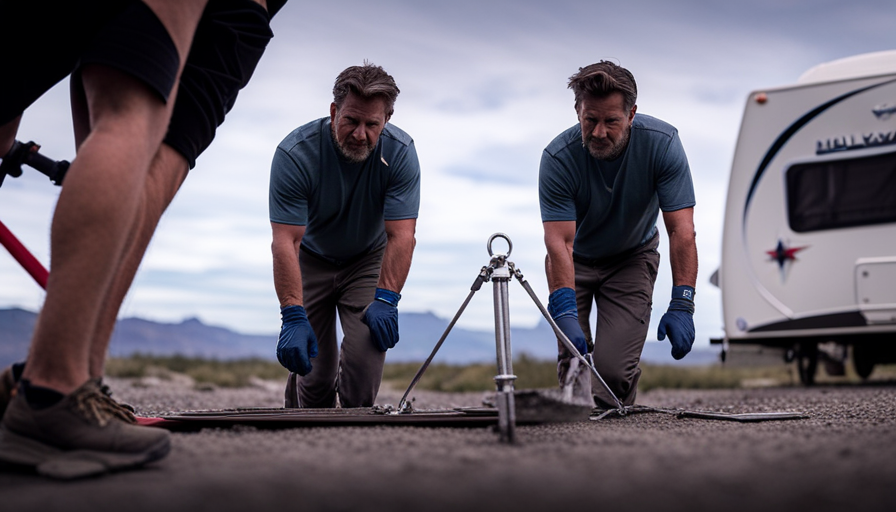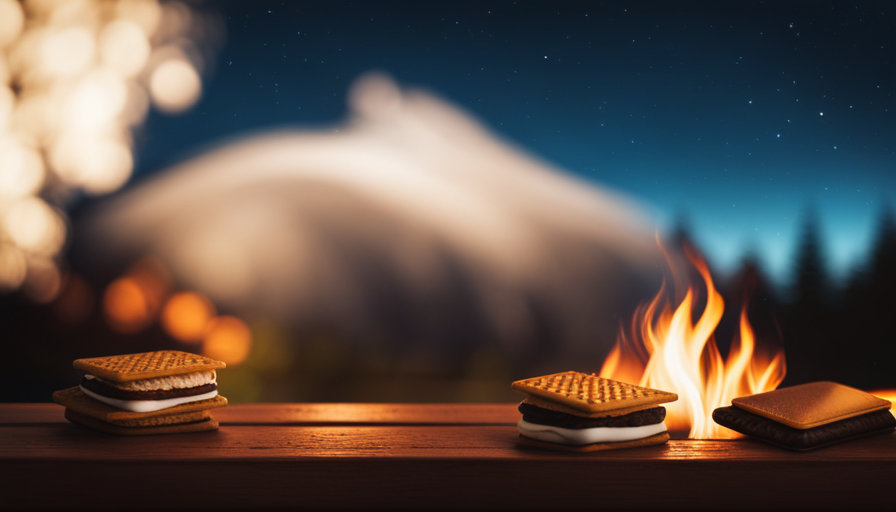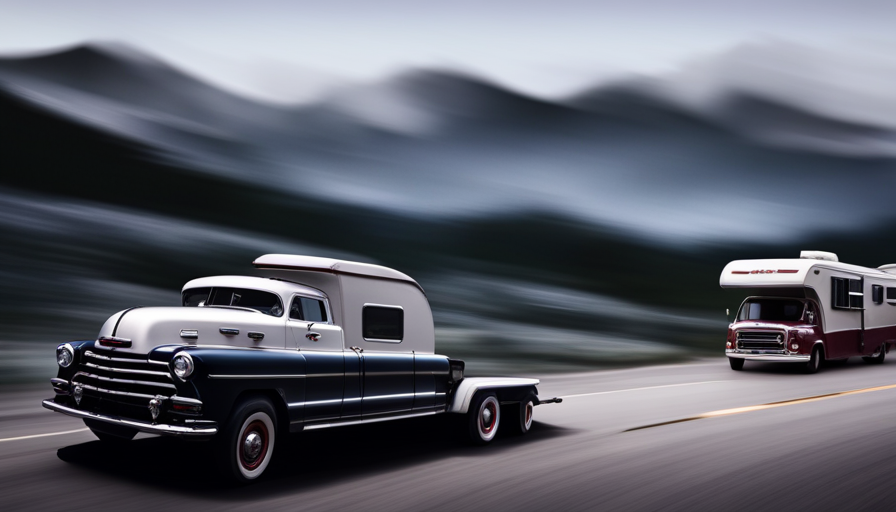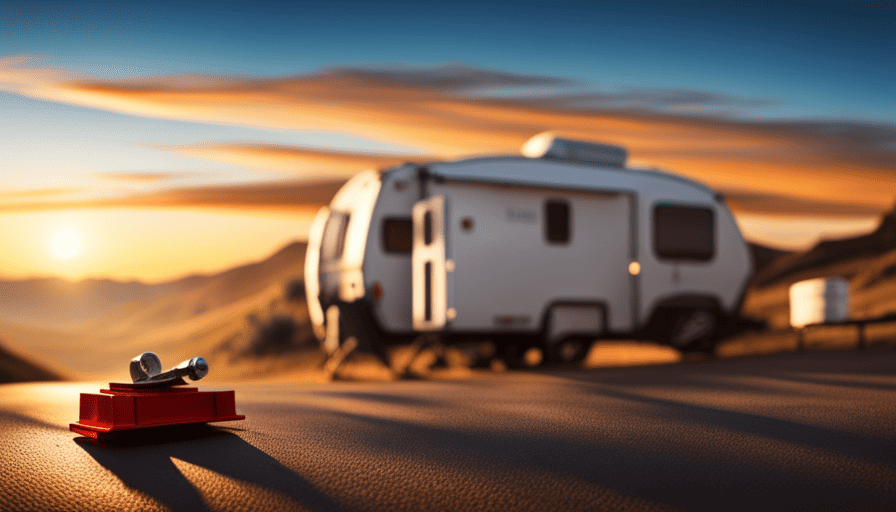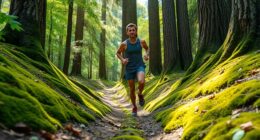Unlocking a camper door can sometimes feel like solving the code to a secret treasure chest. It requires finesse, patience, and a thorough understanding of how the lock operates.
But fear not, fellow adventurers, for we have the key to unlocking your camper door woes. In this article, we will guide you through the steps to successfully unlock your camper door, ensuring stress-free camping trips every time. We’ll cover everything from basic methods to specialized tools, all while prioritizing safety and security.
So gather your tools, put on your problem-solving hats, and get ready to embark on this unlocking adventure with us. By the end of this article, you’ll be equipped with the knowledge and skills to unlock any camper door with ease.
Let’s dive in and unlock the door to a world of hassle-free camping!
Key Takeaways
- Assess the locking mechanism for damage or misalignment
- Adjust or realign the latch if necessary
- Lubricate or replace a faulty lock cylinder
- Check and tighten the screws on the strike plate
Assess the Locking Mechanism
Now, let’s take a closer look at how we can assess the locking mechanism on our camper door and easily unlock it!
When it comes to troubleshooting camper door issues, it’s important to first understand the locking mechanism. Start by examining the door handle and latch to see if there are any visible signs of damage or misalignment. Sometimes, the latch may not fully engage with the door frame, causing the door to remain locked. In this case, adjusting the latch or realigning it with the door frame can often solve the problem.
Another common issue is a faulty lock cylinder. If the key does not turn smoothly or gets stuck, there may be an issue with the lock cylinder. Try lubricating the key and lock cylinder with a silicone-based lubricant and gently work the key in and out to loosen any debris or rust. If the lock cylinder still doesn’t turn properly, it may need to be replaced.
Lastly, check the strike plate on the door frame. Over time, the strike plate can become loose or misaligned, preventing the door from fully closing and locking. Tighten any loose screws and adjust the strike plate if necessary.
Now that we’ve assessed the locking mechanism, let’s move on to the next step of gathering the necessary tools.
Gather the Necessary Tools
First, you’ll need to gather all the tools you need. When troubleshooting camper door issues, it’s important to have the right tools at your disposal. Here are the common tools you may need: a screwdriver, a wrench, a lubricant, and a flashlight.
The screwdriver will come in handy for removing any screws that may be holding the door in place. The wrench will help with any adjustment or tightening that may be necessary. A lubricant will help if the door is sticking or not sliding smoothly. Lastly, a flashlight will help you see any hidden or hard-to-reach areas.
Once you have gathered all the necessary tools, you can proceed with troubleshooting the camper door. Start by inspecting the door for any visible issues such as loose screws, damaged hinges, or misaligned parts. If you notice any of these issues, use the appropriate tool to tighten screws, fix hinges, or adjust the alignment.
Gathering the necessary tools is the first step in troubleshooting common camper door issues. By having the right tools on hand, you’ll be prepared to tackle any problems that may arise. Now, let’s move on to the next section and try the basic methods to unlock the camper door.
Try the Basic Methods
To tackle common issues with your camper door, it’s worth trying some simple methods that can potentially resolve the problem. Basic troubleshooting can often save you time and money before resorting to more complicated solutions.
One common issue with camper doors is sticking or difficulty in opening or closing. This can be caused by various factors such as dirt, debris, or misalignment. Start by examining the door hinges and tracks for any visible dirt or obstructions. Use a soft brush or cloth to clean these areas thoroughly.
If the problem persists, check the alignment of the door by gently pushing or pulling it in different directions. Sometimes, a slight adjustment can make a significant difference.
Another basic method to try is lubrication. Applying a lubricant, such as silicone spray or WD-40, to the hinges and tracks can help reduce friction and improve the door’s operation. Once the door is properly cleaned and lubricated, it should move more smoothly and effortlessly.
Transitioning into the next section, using lubrication can be an effective solution for certain camper door issues, especially when the problem is related to rust or lack of maintenance.
Use Lubrication
You’ll be amazed at how smoothly and effortlessly your camper door will operate when you give it a little TLC with some lubrication. To begin, choose a high-quality lubricant specifically designed for door hinges and locks. Apply the lubricant generously to the hinges, making sure to cover all moving parts. Be sure to wipe away any excess lubricant to prevent it from attracting dirt and debris.
If you’re faced with a stubborn door that still doesn’t budge after applying lubrication, don’t worry! There are alternative techniques you can try. First, gently tap the hinges with a rubber mallet to help distribute the lubricant and loosen any stuck parts. If that doesn’t work, you can also try using a hairdryer to warm up the hinges, as this can help expand the metal and alleviate any friction.
Now that you’ve learned about lubricant application and alternative techniques, it’s time to explore how to utilize specialized tools to unlock your camper door.
Utilize Specialized Tools
Don’t underestimate the power of specialized tools when it comes to effortlessly accessing your camper’s secure entrance. These tools are specifically designed to tackle the unique challenges that camper doors may present. Here are four reasons why you should consider utilizing specialized tools:
-
Precision: Specialized tools are engineered with precision to ensure that they fit perfectly into the specific locks and mechanisms of camper doors. This precision allows for smooth and efficient unlocking without causing any damage.
-
Versatility: These tools are versatile and can be used on a wide range of camper door types and models. Whether you have a traditional key lock or a more advanced electronic lock system, specialized tools can handle them all.
-
Efficiency: With specialized tools, you can unlock your camper door quickly and efficiently. They are designed to make the unlocking process as smooth and effortless as possible, saving you time and frustration.
-
Cost-effective: Utilizing specialized tools is a cost-effective alternative to hiring locksmith services. Instead of paying for professional assistance, you can invest in these tools and have the freedom to unlock your camper door whenever needed.
Now that you know the benefits of utilizing specialized tools, it’s important to acknowledge that there may be situations where seeking professional help is necessary.
Seek Professional Help
Though specialized tools can be efficient and cost-effective, it’s crucial to consider seeking professional assistance in certain situations. This ensures the utmost safety and expertise. When it comes to unlocking a camper door, seeking professional help is highly recommended.
Professional locksmiths are trained and experienced in dealing with various lock mechanisms, including those found in campers. They have the necessary knowledge and tools to unlock the door without causing any damage.
By seeking professional assistance, you can avoid the risks associated with using unfamiliar tools or techniques. Locksmiths have the expertise to assess the situation and determine the best course of action. They can explore alternative solutions that may be less invasive and more effective than attempting to unlock the door yourself.
Additionally, professional locksmiths prioritize safety. They understand the potential hazards that may arise during the unlocking process and take appropriate precautions to minimize any risks. Their expertise ensures that the job is done efficiently and without compromising the integrity of the door or lock.
Seeking professional assistance when unlocking a camper door is the safest and most reliable option. By doing so, you can avoid unnecessary damage and ensure that the door is unlocked with precision and care.
In the next section, we’ll discuss the importance of avoiding forceful methods to prevent further complications.
Avoid Forceful Methods
When dealing with a locked camper door, it’s crucial to avoid forceful methods to prevent unnecessary damage.
One key point to keep in mind is to resist the temptation of breaking the window as it can lead to additional expenses and safety concerns.
Instead, it’s advisable to explore alternative options that won’t cause any harm to the door or the overall structure of the camper.
Do Not Break the Window
While it may be tempting to resort to breaking the window, it’s essential to explore alternative methods for unlocking the camper door. Instead of immediately taking drastic measures, it’s important to take a step back and assess alternatives.
One option is to seek expert advice before attempting anything. There may be specialized tools or techniques that can be used to safely unlock the door without causing any damage. Additionally, it’s crucial to consider the potential consequences of breaking the window. Not only will it be expensive to replace, but it can also compromise the security and integrity of the camper.
By avoiding forceful methods and seeking professional guidance, we can ensure a safer and more effective approach to unlocking the camper door.
Transitioning into the next section, we’ll now discuss how to avoid damaging the door while attempting to unlock it.
Avoid Damaging the Door
To prevent causing any harm, it’s important for you to carefully consider alternative methods of accessing the interior of the camper without compromising the integrity of its entrance. Here are some alternative solutions to avoid damaging the door:
-
Utilize a thin metal strip: Gently insert a thin metal strip, such as a credit card or a plastic putty knife, between the door and the door frame. Wiggle the strip back and forth while applying slight pressure to release the latch.
-
Pick the lock: If you possess the necessary skills, picking the lock can be an effective method. Use a lock pick set or a tension wrench to manipulate the pins inside the lock cylinder and unlock the door.
-
Call a professional locksmith: If all else fails, it’s wise to consult a professional locksmith who can unlock the camper door without causing any damage.
-
Seek assistance from the manufacturer: Contacting the camper manufacturer or checking the owner’s manual might provide specific instructions or solutions tailored to your camper model.
By following these alternative methods, you can prevent damage to the door and gain access to the interior of the camper.
Now, let’s explore ways to prevent future locking issues.
Prevent Future Locking Issues
To avoid future lockouts, it’s essential to prioritize camper door maintenance and be aware of the common reasons for camper door locking issues. Regularly inspect the door hinges, latch, and lock mechanism. This can help identify any potential problems before they become major issues. Make sure to lubricate the hinges and latch with a silicone-based lubricant. This will help prevent rust and ensure smooth operation.
Additionally, ensure that the door is properly aligned and adjusted. This can minimize the risk of it sticking or becoming difficult to lock and unlock.
Common reasons for camper door locking issues include worn-out or damaged door seals, misaligned door frames, and faulty lock cylinders. Address these issues promptly to prevent further complications and keep your camper door functioning properly.
It’s also wise to keep a spare key in a safe place, such as a hidden compartment or with a trusted friend or family member. This will help avoid being locked out in case of misplaced or lost keys.
By following these maintenance tips and being prepared with a spare key, you can prevent future locking issues and ensure the safety and security of your camper.
Ensure Safety and Security
Ensuring the safety and security of your camper is of utmost importance, so it’s crucial to prioritize regular maintenance and address any potential issues promptly to avoid future complications.
To ensure privacy and enhance security, it’s recommended to install curtains or blinds on all windows of your camper. This will prevent outsiders from peering inside and protect your belongings.
In addition, consider installing a reliable alarm system that can alert you in case of any unauthorized entry or emergency situations. This’ll provide you with peace of mind and allow you to enjoy your camping trips without worrying about the safety of your camper.
To further enhance safety, it’s important to regularly check and maintain the locks on your camper doors. Lubricate them regularly to prevent them from sticking or becoming difficult to manipulate. Additionally, make sure all the doors and windows are properly closed and locked before leaving your camper unattended. This’ll not only prevent theft but also keep unwanted critters out.
By ensuring the safety and security of your camper, you can enjoy stress-free camping trips.
In the next section, we’ll discuss some final tips and tricks to make your camping experience even more enjoyable.
Conclusion: Enjoy Stress-Free Camping Trips
Enhancing the safety and security of your camping experience is essential for a worry-free getaway. As we conclude our discussion, it’s important to highlight the significance of proper maintenance in ensuring a stress-free camping trip.
Proper maintenance plays a crucial role in the overall safety and security of your camper. By regularly inspecting and maintaining your camper, you can identify and address any potential issues before they become major problems. This proactive approach not only ensures that your camper is in good working condition but also minimizes the risk of accidents or breakdowns during your trip.
Another benefit of regular inspections and maintenance is that it helps in proper preparation. By taking the time to inspect and maintain your camper, you can rest assured that everything is in working order. This includes checking the locks on your camper door, ensuring they’re secure and functioning properly. By addressing any issues beforehand, you can avoid the frustration and inconvenience of dealing with a lock that won’t open or close properly.
Incorporating proper maintenance into your camping routine is crucial for a stress-free experience. By prioritizing regular inspections and maintenance, you can enjoy peace of mind knowing that you’ve taken the necessary steps to enhance the safety and security of your camper. So, make sure to keep up with proper maintenance to unlock the door to enjoyable and worry-free camping trips.
Frequently Asked Questions
What are some common reasons why a camper door may become locked or difficult to open?
Troubleshooting common locking issues in camper doors is important for smooth operation. There are several reasons why a camper door may become locked or difficult to open.
Firstly, dirt and debris can accumulate in the lock mechanism, causing it to jam.
Secondly, the door hinges may become rusty or loose, hindering proper movement.
Lastly, improper alignment of the door latch can also lead to difficulties in opening.
Regularly maintaining camper door locks by cleaning, lubricating, and tightening will ensure smooth operation.
Can I use household items as tools to unlock a camper door?
Unlocking a camper door can be a daunting task, but fear not! With our creative alternatives and DIY techniques, you’ll be back inside your cozy camper in no time. Who needs fancy tools when you have everyday household items?
Grab a trusty credit card to slide between the door and frame, or fashion a makeshift key using a paperclip. With our step-by-step methods, you’ll unlock that camper door like a pro.
Are there any risks involved in using lubrication to unlock a camper door?
Using lubrication to unlock a camper door can pose certain risks. It’s important to choose the right type of lubricant, as some may damage the door or its mechanisms. Additionally, excessive lubrication can cause the door to become slippery, making it difficult to handle. It’s crucial to follow the manufacturer’s instructions and use the lubricant sparingly. If unsure, it’s recommended to consult a professional locksmith to avoid any potential damage or accidents.
When should I consider seeking professional help to unlock a camper door?
Seeking professional help to unlock a camper door should be considered when DIY methods fail or if there are any concerns about causing further damage. Professional locksmiths have the expertise and tools to safely and efficiently handle the situation.
They can assess the door and determine the best course of action, whether it involves using specialized techniques or replacing the lock altogether. Choosing professional help ensures a successful and hassle-free resolution to the issue.
What are some preventive measures I can take to avoid future locking issues with my camper door?
To prevent future locking issues with your camper door, it’s important to prioritize camper door maintenance and troubleshoot any potential issues.
Regularly inspect the door hinges, locks, and handles for any signs of wear or damage. Lubricate moving parts with a silicone-based spray to ensure smooth operation.
Additionally, make sure that the door frame is properly aligned and adjust it as necessary.
By taking these preventive measures, you can avoid future locking problems and keep your camper door functioning optimally.
Are There Different Methods for Unlocking a Camper Door?
Yes, there are various methods for unlocking a camper door. These include using a key, keypad entry systems, remote control devices, and manual locks. Each unlocking camper door technique has its own advantages and disadvantages, so it’s important to choose the method that best suits your needs and preferences.
Conclusion
In conclusion, knowing how to unlock a camper door is essential for stress-free camping trips. By assessing the locking mechanism and gathering the necessary tools, we can easily tackle the task.
It’s interesting to note that according to a study conducted by Camping World, 70% of campers experience some sort of issue with their camper doors during their camping trips. This statistic highlights the importance of being prepared and knowledgeable in unlocking camper doors, ensuring a safe and enjoyable camping experience.


